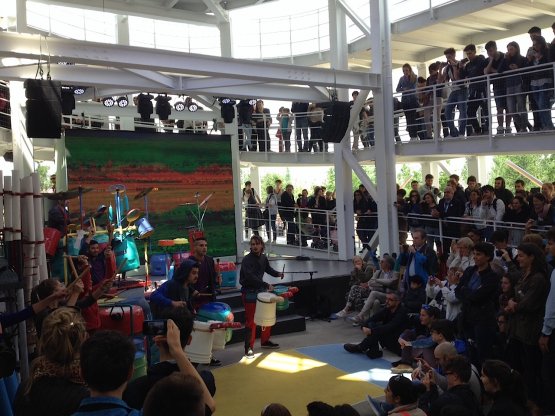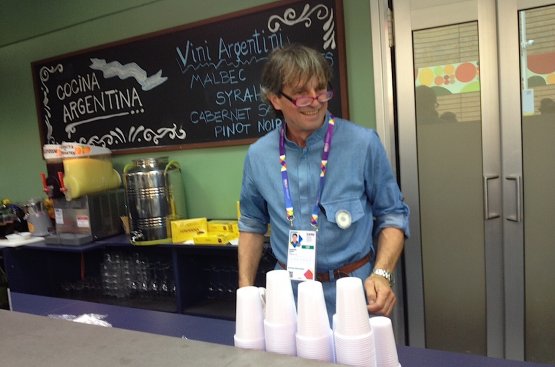Even though it is not showing off any installation conceived by an archistar, Argentina’s pavilion stands out with its strong presence, halfway down the Decumanum. Its shape is unmistakable: a line of large silos, an architectural structure that doesn’t leave you speechless as others nearby. Yet it is a spot-on symbol because this is not a time in history when to show off fireworks but substance. With or without the crisis, Argentina still has 40 million inhabitants and produces food for over 400 million people.
Wheat, soy, corn on one side – the country’s most important agricultural products – and fruit, vegetables and meat on the other thus feed a decent portion of world much beyond the Andes and the Pampa, it needs to be said. This is why you can climb up the silos from the inside, through a circular, open staircase that leads to a multimedia project at the top, the heart of the building. A video-loop is projected on the walls, lasting 12 minutes. It portrays the country’s supply methods and instruments from the great immigration period to our days, with large digressions on food processing because though it is true that they harvest lots of food, they most of all process and refine what they pick.

“Feeding our people” – and not always, as we’ve seen after the big crisis in 2001 -, “feeding the planet” and “feeding knowledge” are thus the three conceptual layers developed in the pavilion, an invitation to reflect on the concepts of food sovereignty and equal distribution of resources, though from the bottom. This is the meaning of the blue metalworkers’ uniforms everyone is wearing, from stewards to cooks, from waiters to percussionists who from time to time bombard visitors with rhythmic (
Stomp-like) percussions on industrial tubes and bins.
We earlier explored the menu in the lively bar with tables and stoves in view, right after the entrance to the pavilion. Cocina argentina is written on blackboards and in this case too they focus on its most traditional and popular appearance. Besides, the fine dining boom hitting Latin America (Brazil, Peru, Venezuela…) doesn’t seem to have overflown to Buenos Aires and the surroundings.

...and a bistro with traditional specialties
You can choose between
empanadas with meat (beef, eggs, olives and spices),
de queso (cheese and onion) and with vegetables (spinach, béchamel and cheese). Sandwiches such as
Choripan con aderezo chimichurri y salsa criolla (with sausage, chimichurri sauce and Creole sauce) or a
Sandwich matambre con mayonesa y lechuga (with cold rolled beef, mayonnaise and lettuce), which truly tames your hunger.
The most famished, however, choose the Platos principales with meat or fish such as Lomo a la parrilla con papas al horno o asada (grilled fillet with potatoes). Those with a sweet tooth, bet on the many desserts, which are a dulce de leche triumph: Pancake filled with dulce de leche, Bread pudding, Home made flan with dulce de leche and cream and Alfajores, soft biscuits again filled with dulce de leche. They’re all excellent antidotes for this country’s efforts, made also lighter by a glass of Malbec or sangria.